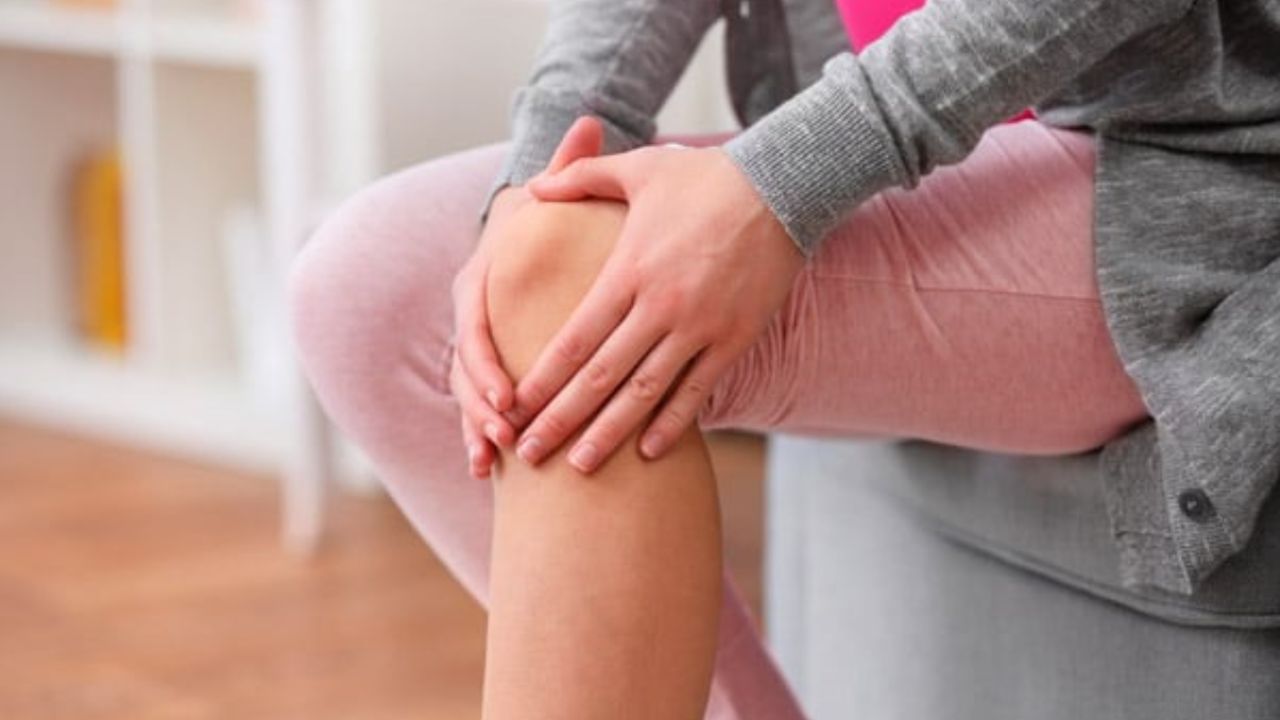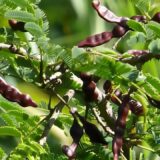The Ayurvedic Way: Managing Joint and Muscle Pain Naturally
Joint and muscle pain is a prevalent health issue that can arise from various causes. Muscle pains often result from muscle overexertion or sprains, while joint pain can manifest as either an acute or chronic condition, potentially worsening over time.
Fortunately, with proper care and treatment, we can effectively address these concerns and alleviate discomfort. The management of joint and muscle pain typically requires a holistic approach. Beyond providing relief from pain, it is crucial to address the root causes to prevent future recurrences.
The Causes of Joint Pain
Joint pain can affect any part of the human body, and its origins can vary significantly. Different joints may experience pain for various reasons, as outlined below:
1. Elbow Joint Pain: Elbow joint pain often arises due to conditions like tennis elbow or golf elbow. These conditions are typically associated with repetitive motions and strain on the elbow joint.
2. Wrist Pain: Wrist pain may be attributed to conditions such as carpal tunnel syndrome. This condition occurs when the median nerve in the wrist is compressed, leading to discomfort and pain in the wrist area.
3. Foot Joint Pain: Pain in the foot joints can be the result of several conditions, including Achilles tendonitis, plantar fasciitis, and calcaneal bursitis. These conditions typically involve inflammation or irritation of the tendons, ligaments, or bursae in the foot.
4. Knee Joint Pain: Knee joint pain is a common complaint and can be caused by conditions like osteoarthritis or rheumatoid arthritis. These are degenerative joint diseases that affect the knee’s cartilage, leading to pain and discomfort.
5. Leg Joint Pain: Pain in the joints of the legs often occurs due to wear and tear, overuse, and injuries that affect the joints, bones, muscles, ligaments, tendons, or other soft tissues. These injuries can result from activities, accidents, or underlying medical conditions.
6. Cartilage Degeneration: The aging process, a sedentary lifestyle, and deficiencies in essential vitamins can lead to the gradual wearing down of cartilage in the joints. This wear and tear can contribute to joint pain.
7. Inflammation: Inflammation within the joint tissues can result from autoimmune conditions or other underlying reasons. Inflammatory responses within the joints often lead to discomfort and pain.
8. Injury or Overexertion: Joint pain can also be a consequence of injuries or excessive strain on the joints. Physical exertion or traumatic incidents can cause damage to the joint structures.
The manifestations of joint pain typically encompass symptoms such as joint swelling, stiffness, intense pain, reduced mobility, and limitations in the range of motion.
Ayurvedic Insights into Joint Pain
Ayurveda, the ancient Indian system of medicine, offers a unique perspective on the causes and management of joint pain. According to Ayurveda, joint pain can occur due to an imbalance in Vata dosha or the accumulation of toxins known as Ama.
Vata, associated with movement, can migrate to the joints, weakening the tissues and depleting the lubricating fluids that protect them. This leads to stiffness and pain during joint movement.
The build-up of toxins is another factor contributing to joint pain in Ayurveda. Digestion is regarded as a cornerstone of good health, and any disruption in it weakens Agni, the digestive fire.
This allows toxins to accumulate in the body, including the joints, resulting in stiffness and inflammation. Cold weather and humidity tend to exacerbate this condition, intensifying the pain.
Ayurveda advocates a multifaceted approach to maintaining joint and muscle health, including:
1. External Application of Ayurvedic Oils: The use of Ayurvedic oils for leg pain and joint pain, applied externally, can provide relief.
2. Herbal Supplements: Individuals experiencing leg pain due to Vata imbalance can consider herbal supplements to restore Vata balance and manage toxin levels.
3. Panchakarma Therapies: In severe cases, Ayurvedic therapies such as Panchakarma can be beneficial for toxin reduction. Panchakarma encompasses various therapies targeting specific body parts, helping to cleanse accumulated toxins.
4. Dietary Considerations: Diet plays a pivotal role in Ayurveda’s approach. To pacify Vata Dosha, the diet should include sour, salty, and sweet foods while minimizing highly acidic options. Increasing the consumption of calcium-rich foods can significantly enhance bone health.
5. Exercise: Regular physical activity is crucial for maintaining healthy joint mobility. Yoga, in particular, is recommended for promoting joint health and overall well-being.
By addressing the root causes of joint pain and adopting these Ayurvedic practices, individuals can work towards alleviating discomfort, promoting joint health, and enhancing their overall quality of life.
Ayurvedic Medicine for Joint and Muscle Pain Relief
Ayurveda provides a wide array of solutions and products to effectively manage joint pain and alleviate associated symptoms. Here are some popular Ayurvedic products known for their ability to support joint and muscle health:
1. Murivenna Oil
Murivenna oil is enriched with anti-inflammatory herbs that can significantly reduce pain and swelling associated with muscle spasms, sprains, muscle pulls, cuts, and burns.
It serves as an effective Ayurvedic remedy for both muscle and joint pain. To use for joint and muscle pains, warm the recommended quantity of oil in a bowl placed in warm water for about a minute.
Apply the warm oil to the affected area(s) using slow, circular motions while sitting on a non-slippery surface.
Allow your body to absorb the oil for approximately 30 minutes, then either take a bath or wash with warm water and pat dry. Repeat this process once daily to experience the full benefits.
2. Balaswagandhadi Thailam
This potent oil blend contains Ashwagandha, Laksha, sesame oil, and a range of other herbs. Balaswagandhadi thailam is particularly beneficial for relieving muscle soreness and fatigue.
To use, take the recommended amount of oil in a bowl, sit on a flat, non-slippery surface, and gently apply it to the affected area(s) using slow, circular motions.
Allow your body to absorb the oil for approximately 30 minutes, then wash it off with warm water and pat dry. Repeat this process once daily for optimal results.
3. Yogaraja Guggulu
Yogaraja Guggulu is renowned for its anti-inflammatory properties and its effectiveness in alleviating joint pain. It contains key ingredients such as Guggulu, Triphala, Pippali, and Cavya, among others.
This Ayurvedic joint care supplement nourishes the cartilage, the protective cushion around the joints, and helps pacify Vata dosha. For proper dosage, it is advisable to consult with an Ayurvedic physician.
These Ayurvedic muscle relaxant products mentioned above are among the most effective options available for addressing muscle stiffness, and joint pain, and promoting overall joint and muscle health.
Ayurvedic Herbs for Muscle, Leg, and Joint Pain
Ayurveda offers a plethora of herbal remedies and practices that can be harnessed to manage various health issues, including muscle pain, leg pain, joint pain, spasms, and sprains. Here are some highly effective Ayurvedic home remedies:
1. Eucalyptus Oil (Nilgiri Oil)
Eucalyptus oil, derived from the Nilgiri plant, is a valued Ayurvedic remedy for alleviating joint and muscle pain.
This oil is known for its anti-inflammatory properties, which make it particularly effective in reducing inflammation and providing relief from joint pain.
Applying this oil to the affected area(s) on a daily basis can help ease inflammation and alleviate joint pain.
2. Yogaraja Guggulu
Yogaraja Guggulu is a traditional Ayurvedic formulation crafted from the herb Guggulu. It is regarded as one of the beneficial joint pain relief products in Ayurveda.
This formulation is known for its capacity to alleviate joint stiffness, ease joint pain, enhance joint flexibility, and improve overall mobility. It can be an excellent remedy for joint-related discomfort.
3. Nirgundi
Nirgundi is a widely recognized and valuable herb in Ayurveda, especially for managing arthritis and joint pain.
This herb possesses anti-inflammatory and antioxidant properties, which contribute to its effectiveness in mitigating inflammation, stiffness, and pain.
Regularly massaging with Nirgundi oil can be a practical and natural way to reduce joint and muscle pain.
These Ayurvedic home remedies harness the power of nature’s offerings to provide relief from leg, muscle, and joint pain.
They serve as accessible and holistic approaches to managing discomfort and promoting overall well-being.
Yoga For Treating Joint and Muscle Pain at Home
Yoga is a holistic form of exercise that promotes healthy joint mobility and can provide lasting energy throughout the day.
Specific yoga asanas (poses) can effectively manage muscle pain, joint discomfort, spasms, and sprains in various areas of the body. Here are a few beneficial yoga poses for addressing these concerns:
1. Ardha Pincha Mayurasana (Dolphin Pose)
Begin with a forearm plank position. Interlock your fingers and gently walk your feet toward your hands, stopping at a comfortable distance (avoid overstretching).
Aim to rest your heels on the ground and focus on relaxation and deep breathing in this pose. Keep your elbows close together, and over time, gradually increase the stretch with each breath.
2. Ardha Shalabhasana (Half Locust Pose)
Start by lying on your stomach with your arms at your sides. Take a slow, deep breath in and exhale slowly.
During the second breath, lift your right leg about 5-6 inches off the ground and maintain this position while taking slow, deep breaths. Repeat this for five to six breaths with both legs.
If lifting your legs without support feels challenging, you can use one leg to support the other, as illustrated in the image above.
3. Vajrasana (Thunderbolt Pose)
To enter this pose, kneel and sit on your feet, relieving pressure from your knees. Vajrasana is highly effective for strengthening muscles and promoting joint relaxation.
4. Balasana (Child’s Pose)
Start in Vajrasana, inhale deeply, and as you exhale, gradually lower your body, attempting to touch the ground with your forehead while extending your arms forward. Refer to the image above for reference.
Tips: After practicing regularly for five to six days, consider intensifying the stretch with each breath.
Regular practice of these yoga poses can aid in relieving joint and muscle pain, enhancing flexibility, and promoting overall joint health.
Key Takeaways
Joint and muscle pain can significantly impact daily life, affecting activities such as going to the gym or work. These discomforts, including spasms, sprains, and muscle pulls, can hinder daily routines.
Ayurveda offers a holistic approach to managing joint and muscle pain, providing various treatment options. Here’s a summary of what we’ve learned:
1. Diverse Causes of Joint Pain: Joint pain can arise from a range of factors, including tennis or golf elbows, carpal tunnel syndrome, Achilles tendonitis, plantar fasciitis, arthritis, and more.
2. Ayurvedic Perspective: According to Ayurveda, joint pain is often linked to an imbalance in the Vata Dosha. Ayurveda takes a comprehensive and long-term approach to address and manage joint and muscle pain.
3. Ayurvedic Products: Various Ayurvedic products, such as Murivenna oil, Yogaraj Guggulu, and Balaswagandhadi thailam, have been found effective in managing joint and muscle pain.
4. Herbal Remedies: Ayurveda recognizes the value of numerous herbs with properties that can benefit joint and muscle pain conditions, offering natural and holistic solutions.
5. Yoga for Pain Management: Regular practice of yoga can help individuals cope with muscle and joint pain and alleviate associated symptoms. A selection of yoga poses tailored to these conditions can be beneficial.
Tips: Incorporating Ayurvedic principles, products, and yoga practices into one’s lifestyle can provide relief from joint and muscle pain, ultimately improving overall well-being and quality of life.
Frequently asked questions (FAQs) about managing joint and muscle pain
Q1. What causes joint and muscle pain according to Ayurveda?
A1. According to Ayurveda, joint and muscle pain are often caused by imbalances in the Vata Dosha, which can result from factors such as diet, lifestyle, and stress.
Q2. How does Ayurveda approach the treatment of joint and muscle pain?
A2. Ayurveda takes a holistic approach to treating joint and muscle pain, focusing on balancing doshas, using herbal remedies, therapeutic oils, dietary adjustments, and lifestyle modifications.
Q3. Are there specific Ayurvedic products that can help with joint and muscle pain?
A3. Yes, Ayurveda offers products like Murivenna oil, Yogaraj Guggulu, and Balaswagandhadi thailam, which are known for their effectiveness in managing joint and muscle pain.
Q4. What herbs are commonly used in Ayurveda to address joint and muscle pain?
A4. Ayurvedic herbs like Ashwagandha, Nirgundi, and Guggulu are often recommended for their anti-inflammatory and pain-relieving properties.
Q5. Can Yoga help alleviate joint and muscle pain?
A5. Yes, regular yoga practice can be beneficial for managing pain. Certain yoga asanas (poses) are particularly helpful in promoting joint and muscle health.
Q6. Is Ayurvedic treatment suitable for chronic joint conditions like arthritis?
A6. Yes, Ayurveda offers comprehensive approaches to managing chronic joint conditions, and it can be a valuable complementary therapy for conditions like arthritis.
Q7. Are there dietary recommendations in Ayurveda for joint and muscle health?
A7. Ayurveda suggests dietary choices that pacify Vata Dosha, including sour, salty, and sweet foods while minimizing highly acidic options.
Q8. How long does it typically take to see results with Ayurvedic treatments for joint and muscle pain?
A8. The time it takes to see improvements can vary depending on individual factors and the severity of the condition. Some individuals may experience relief relatively quickly, while others may require more time.
Q9. Is Ayurvedic treatment safe and suitable for everyone?
A9. Ayurveda is generally considered safe when practiced under the guidance of qualified practitioners. However, it’s essential to consult with a healthcare professional before starting any new treatment, especially if you have underlying health conditions or are taking medications.
Q10. Can Ayurveda be used alongside conventional medicine for joint and muscle pain management?
A10. Ayurveda can complement conventional treatments. It’s important to inform your healthcare providers about any Ayurvedic therapies you are using to ensure safe and coordinated care.
References:
- Medicinal herbs in the treatment of neuropathic pain: a review(1)
- REVIEW OF PAIN: AN AYURVEDIC APPROACH(2)
- PAIN MANAGEMENT THROUGH AYURVEDA: A METICULOUS REVIEW(3)
- Effectiveness of an Ayurveda treatment approach in knee osteoarthritis – a randomized controlled trial(4)
- Therapeutic evaluation of “Ayush Tulsi Jiwan Plus” oil for chronic musculoskeletal pain relief(5)

























